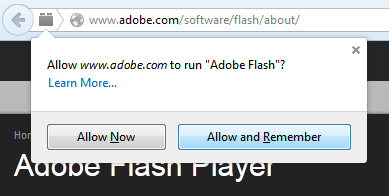CVE-2015-0313 used in the wild as long ago as December.
Adobe
has just
issued
an out-of-band patch for its
Flash Player
to fix a zero-day vulnerability that is actively being exploited in the wild.
You may be forgiven for thinking you had already patched this
two weeks ago
when
Flash Player
version 16.0.0.287 fixed
CVE-2015-0310
, or
last week
when version 16.0.0.296 fixed
CVE-2015-0311
, another vulnerability that was being used in exploit kits in the wild.
This, however, is yet another vulnerability:
CVE-2015-0313
, which is being used against
Internet Explorer
and
Firefox
users.
This time it is not the Angler exploit kit that is infecting users, but the relatively unknown ‘Hanjuan’ kit, as
Trend Micro
reports
. A number of researchers, including
F-Secure
‘s Timo Hirvonen, believe that Hanjuan’s use of the vulnerability may go back as far as December last year.
It seems Flash zero-day CVE-2015-0313 might have been exploit by HanJuan exploit kit already on 2014-12-20 or even earlier…— Timo Hirvonen (@TimoHirvonen)
February 3, 2015
CVE-2015-0313 is a use-after-free vulnerability in
Flash
‘s handling of fast memory access to ‘domain memory’.
SpiderLabs
‘s Ben Hayak has analysed the vulnerability
here
, with
Trend Micro
‘s Peter Pi providing another analysis
here
.
Last week, we published the VB2014 paper ‘Ubiquitous Flash, ubiquitous exploits, ubiquitous mitigation’ from
Microsoft
researchers Chun Feng and Elia Florio. This paper analyses two earlier vulnerabilities in
Flash Player
‘s implementation of domain memory opcode and also serves as a good general introduction to the subject. You can read their paper
here
in HTML-format, or download it
here
as a PDF.
While updating to
Flash Player
version 16.0.0.305 should be given the highest priority, users might also want to consider making
Flash
click-to-play in all their browsers. Unlike NoScript, which does the same to JavaScript, it doesn’t seriously impact the browsing experience. Graham Cluley
explains
how to enable this feature in the five most popular browsers.

By making Flash Player click-to-play, even Adobe can’t run Flash without your permission.
Posted on 05 February 2015 by
Martijn Grooten
Leave a Reply